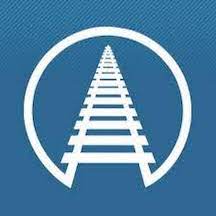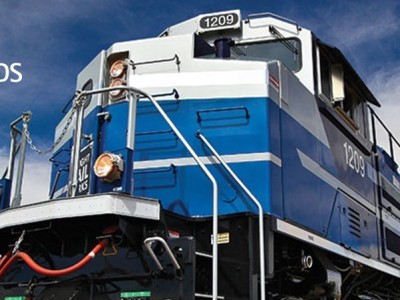FRA revises regulations to enhance track safety by pairing automated track inspection technology and human inspections
Oct 23, 2024New proposed rule-making would codify industry practices on the use of track inspection technology to enhance safety
The U.S. Department of Transportation’s Federal Railroad Administration (FRA) today published a notice of proposed rulemaking (NPRM) that seeks to enhance railroad track safety. The changes would require certain railroads to supplement visual inspections by operating a Track Geometry Measurement System (TGMS) at specified minimum frequencies on certain types of track. The rule would also set timeframes by which the railroads must act to remediate any track defects identified.
Specifically, Class I and II railroads, as well as intercity passenger railroads and commuter railroads, would have to meet specified inspection frequencies on mainline and controlled siding track that transports annual tonnage greater than 10 million gross tons, regularly scheduled passenger rail service, or trains containing hazardous materials.
“TGMS technology, developed through an FRA-led research effort in collaboration with the rail industry, has been proven to quickly and accurately detect small changes in track geometry, and this proposed rulemaking would codify a standard for TGMS inspection frequencies to ensure that railroads live up to their safety responsibilities, now and in the future,” said FRA Administrator Amit Bose. “Workers performing visual inspections remain essential, as visual inspections check for numerous conditions beyond the scope of track geometry. By requiring TGMS inspections in addition to the currently required visual inspections, FRA proposes to enhance safety while promoting innovation through the use of technology.”
In addition to setting inspection frequencies and timeframes to address detected defects, the NPRM proposes recordkeeping and training requirements for TGMS inspections as well as minimum requirements for what must be included in TGMS reports.
Under the Biden-Harris Administration, USDOT and FRA have taken unprecedented actions to improve rail safety.
- Finalizing new safety regulations: USDOT has taken historic steps to improve the safety of railroads for workers and communities through rulemaking.
- Train Crew Size Safety Requirements: FRA issued a long-awaited rule that ensures trains are safely staffed by establishing minimum safety requirements for the size of train crews. The new rule will enhance safety in the rail industry by generally requiring and emphasizing the importance and necessity of a second crewmember on all trains.
- Certification of Signal and Dispatcher Employees: FRA issued final rules to require railroads to develop written programs for certifying dispatchers and signal employees.
- Requiring Emergency Escape Breathing Apparatus: FRA issued a final rule requiring railroads to provide emergency escape breathing apparatus to train crews and other employees when transporting certain hazardous materials.
- Advanced Notification for First Responders: The Pipeline and Hazardous Materials Safety Administration issued a final rule to require railroads to always maintain — and update in real-time — accurate, electronic information about rail hazmat shipments in a train consist that would be accessible to authorized emergency response personnel.
- Utilizing safety oversight authorities: FRA is consistently drawing attention to emerging rail safety concerns with more than 20 Safety Advisories and Bulletins combined over the last three years; holding railroads accountable through enforcement action; assessing one of the highest amounts ever in the agency’s records for Class I freight railroads in 2023; and undertaking new, focused efforts to ensure safety, such as conducting safety audits and examining the nation’s high-hazard flammable train routes following the 2023 Norfolk Southern derailment in East Palestine, Ohio.
- Expanding a vital safety program to include workers at Class I freight railroads: At Secretary Buttigieg’s urging, a growing number of workers employed at the Class I freight railroads can finally report their experiences to FRA’s Confidential Close Call Reporting System (C3RS) — a vital safety program that allows workers to confidentially report unsafe events and share valuable insight to prevent future incidents.
- Deploying historic infrastructure investments: USDOT continues to deploy the historic resources from President Biden’s Bipartisan Infrastructure Law to upgrade rail infrastructure and improve the safety of communities across the country, notably through FRA’s Consolidated Rail Infrastructure and Safety Improvements (CRISI) Program and Railroad Crossing Elimination Program.
Similar Stories

AAR reports rail traffic for the week ending November 23, 2024
View ArticleA. Stucki Company completes sale of Velocity Rail Solutions and embarks on new chapter of growth
A. Stucki Company (“Stucki”), a leading supplier of highly engineered parts and services for the rail industry, and a portfolio company of Stellex Capital Management (“Stellex”), announced today it has…
View ArticleExpanded rail yard enhances efficiency, decreases delays
The expanded central rail yard at The Port of Virginia has created an increase in efficiency with the port now able to process 2 million twenty-foot equivalent units (TEUs) by…
View Article
AtkinsRéalis provides US Federal Railroad Administration oversight and monitoring services
View Article
AAR reports rail traffic for the week ending November 16, 2024
View Article
New location, expanded capacity for MARS Winter Meeting, January 14–16, 2025
View ArticleGet the most up-to-date trending news!
SubscribeIndustry updates and weekly newsletter direct to your inbox!





